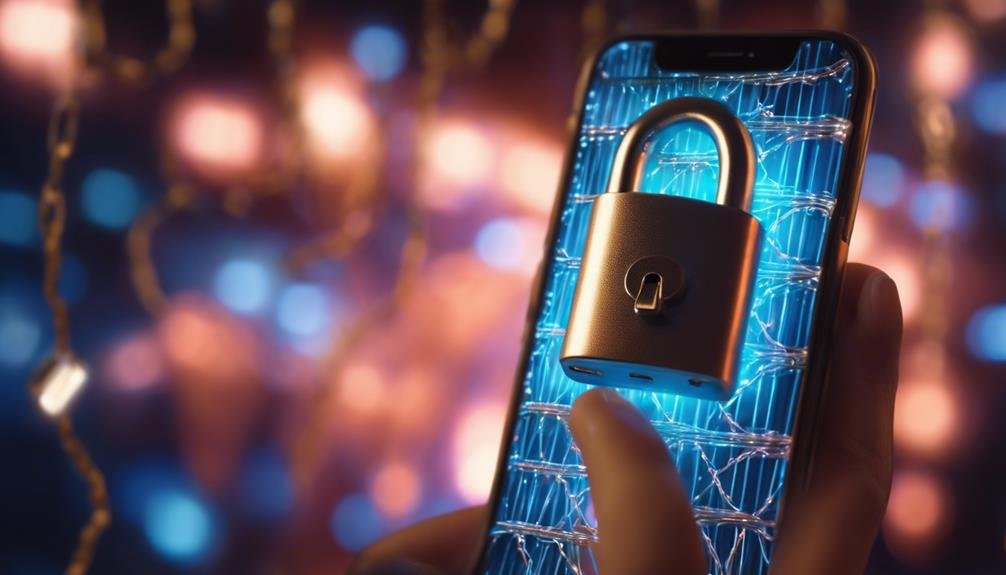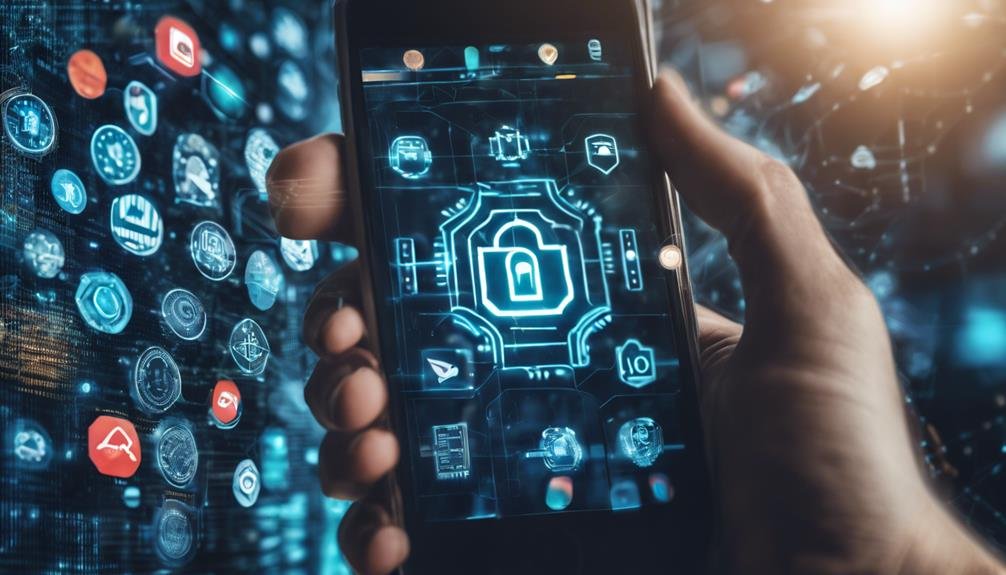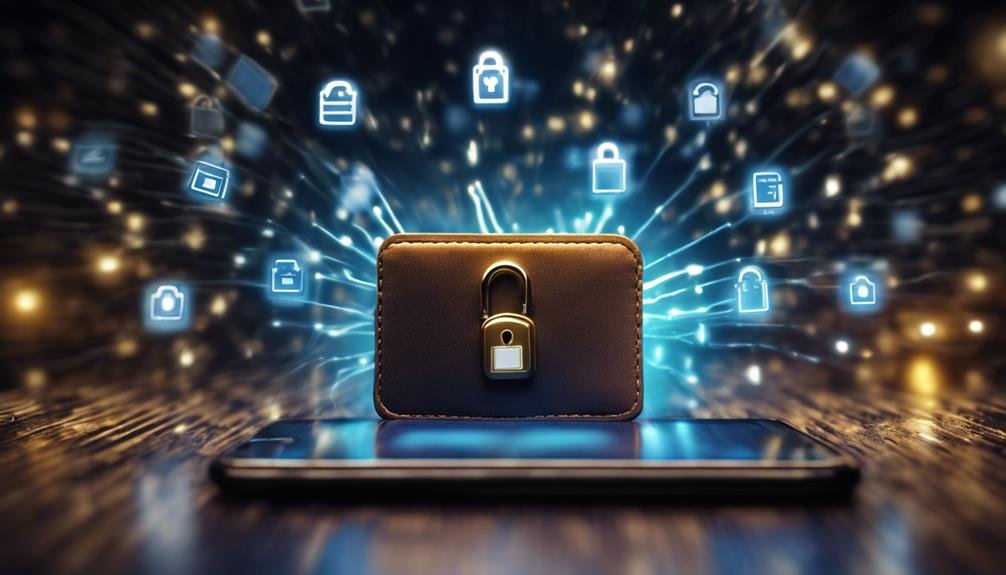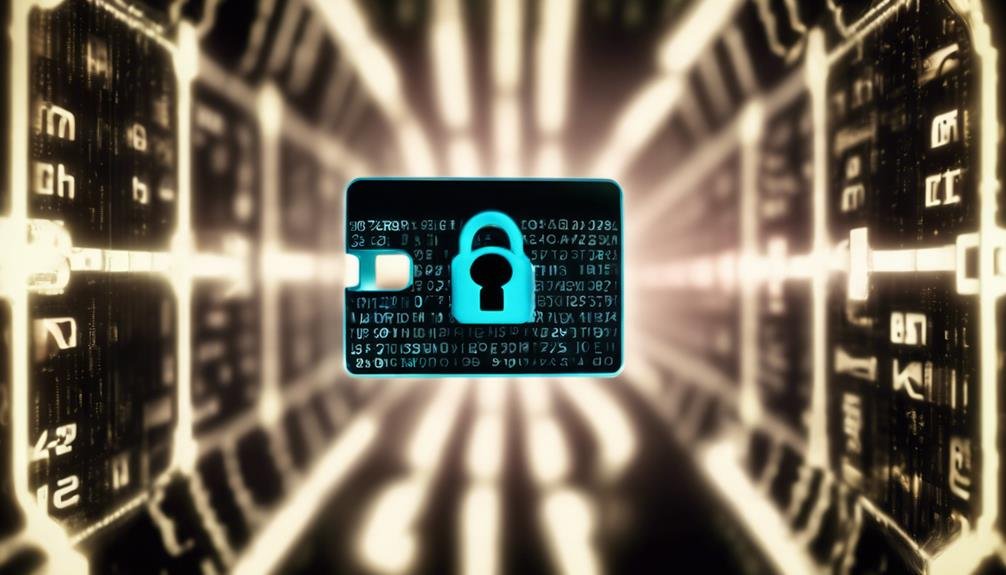Securing cryptocurrency effectively requires implementing Two-Factor Authentication (2FA) wallets, which provide an essential layer of protection. 2FA requires two forms of verification, significantly reducing the risks of unauthorized access and compromised passwords. Authenticators like Twilio Authy generate time-sensitive codes, offering robust Security and user-friendly features.
While SMS and email-based 2FA are susceptible to attacks, hardware tokens, and biometric verification offer more robust safeguards. Backup codes guarantee continuous access to your wallet even if primary methods fail. Avoiding common mistakes, such as relying solely on SMS 2FA, is vital for maintaining Security. With these measures, you can significantly enhance your crypto defenses.
Table of Contents
Brief Overview of Setting Up Two Factor Authentication Hardware Wallet
- Enable 2FA: Add an extra security layer to your crypto wallet by enabling two-factor authentication.
- Use Authenticator Apps: Choose robust authenticator apps like Twilio Authy to generate time-sensitive codes.
- Avoid SMS/Email 2FA: SMS and email-based 2FA are vulnerable to attacks; prefer authenticator apps.
- Backup Codes: Securely store backup codes for emergency access to your crypto wallet.
- Regularly Update 2FA Settings: Regularly review and update your 2FA settings to maintain strong Security.
Understanding Two-Factor Authentication
Two-factor authentication (2FA) is a security mechanism that requires users to provide two distinct forms of identification to access their crypto accounts. This method adds an extra layer of Security beyond the traditional password, greatly enhancing security measures. By incorporating 2FA, users must verify their identity through something they know (a password) and something they have (a code from an authentication app). This dual-verification process is essential in securing crypto holdings, protecting against unauthorized access, and further fortifying the defense of digital assets.
2FA is widely regarded as a best practice within the cryptocurrency community due to its effectiveness in mitigating risks such as fraud and hacking attempts. Implementing 2FA on crypto accounts is a formidable barrier against cyber threats, reducing the likelihood of financial loss and regulatory issues. Authentication apps, such as Google Authenticator or Authy, are commonly used to generate time-sensitive codes, ensuring that even if a password is compromised, unauthorized access remains highly improbable.
Benefits of 2FA in Crypto
Leveraging 2FA in cryptocurrency security strategies offers numerous advantages, including substantially reducing unauthorized access risks. By incorporating an additional layer of Security beyond traditional passwords, 2FA effectively mitigates the threat of compromised passwords. This enhanced authentication mechanism is vital for safeguarding crypto wallets and their sensitive financial assets.
In the domain of cryptocurrency, ensuring safe and secure transactions is paramount. Using 2FA ensures that even if a password is compromised, unauthorized access to the account remains unlikely without the second authentication factor. This dual-layered approach significantly strengthens the Security of crypto wallets, making it exceedingly challenging for malicious actors to breach accounts and steal financial assets.
Furthermore, 2FA plays a pivotal role in protecting against phishing attacks. By requiring a secondary form of verification, typically something only the user possesses, the likelihood of falling victim to phishing schemes is considerably reduced. Notably, the implementation of 2FA is widely available and user-friendly, making it an essential practice for any cryptocurrency holder.
How 2FA Enhances Security

Implementing 2FA significantly strengthens the Security of crypto wallets by requiring users to authenticate their identity through two distinct forms of verification. This dual-layered protection dramatically reduces the risk of unauthorized access, fraud, and hacking attempts, prevalent threats to cryptocurrency holdings. By demanding more than just a password, 2FA guarantees that even if one credential is compromised, the second form of authentication is a robust barrier against illicit activities.
The introduction of 2FA enhances Security in multiple ways:
- Prevents unauthorized access: With two separate verification steps, it becomes increasingly challenging for hackers to breach accounts.
- Mitigates fraud risks: The additional authentication layer makes it challenging for fraudulent actors to impersonate legitimate users.
- Thwarts hacking attempts: By requiring a second factor, such as a biometric scan or a time-sensitive code, 2FA complicates hacking efforts significantly.
- Safeguards cryptocurrency holdings: Ensuring that access to crypto wallets is highly secure protects valuable digital assets from theft and loss.
Incorporating 2FA into crypto wallets is widely recommended and essential for maintaining cryptocurrency holdings’ integrity. This security measure strengthens defenses and instills confidence in users, knowing their digital assets are protected by stringent authentication protocols.
Setting Up 2FA on Wallets
To set up 2FA on crypto wallets, users must enable an additional security layer beyond their passwords. This extra layer is essential for safeguarding crypto assets; ensuring unauthorized access is notably more challenging. Crypto wallets can set up 2FA through either authentication apps or manual code entry.
Authentication apps generate time-sensitive codes that users must input alongside their passwords, providing a dynamic security measure. While setting up 2FA, users typically scan a QR code the wallet service provides, linking their authentication app to the wallet. Alternatively, manual code entry is available, where users input a code into the authentication app to establish the link.
Once setup is complete, verifying changes and activation is a critical step. Users must confirm that 2FA is functioning correctly by logging out and attempting to log back in using the newly established two-factor authentication process. This verification ensures the 2FA mechanism is active and operational, providing the intended security benefits.
Choosing an Authenticator App

When selecting an authenticator app for securing crypto wallets, it is essential to evaluate options that provide robust security features and user-friendly interfaces. Authenticator apps such as Twilio Authy are recommended for setting up Two-Factor Authentication (2FA) in crypto wallets, offering an additional layer of account security. These apps generate time-dependent 6-digit codes, guaranteeing secure access to your crypto holdings and protecting against unauthorized logins.
Twilio Authy stands out because it supports multiple devices and encrypted recovery backups, enhancing user experience and data protection. Using an authenticator app like Authy, you can strengthen your crypto wallets against potential security breaches and ensure your assets remain safe. Key features to take into account when choosing an authenticator app include:
- Multi-Device Support: Authy allows you to sync your 2FA tokens across multiple devices, ensuring you can access your codes from any trusted device.
- Encrypted Backups: With Authy, you can store encrypted backups of your 2FA tokens, simplifying recovery if you lose your device.
- Time-Dependent Codes: Authy generates 6-digit codes that change periodically, providing an additional layer of Security.
- User-Friendly Interface: A simple and intuitive interface makes managing your 2FA tokens straightforward and hassle-free.
Selecting the right authenticator app is essential in safeguarding your crypto assets.
Using Hardware Tokens
Hardware tokens, as physical devices generating one-time passwords (OTPs), provide an additional layer of Security for safeguarding crypto assets. These devices produce unique verification codes, which are used to authenticate crypto transactions, thereby enhancing overall Security. The integration of hardware tokens in Two-Factor Authentication (2FA) systems is particularly vital in mitigating risks associated with unauthorized access.
In cryptocurrency, hardware tokens offer a robust defense against phishing attacks and hacking attempts. Requiring a physical device to generate a one-time code creates a substantial barrier that cybercriminals must overcome to breach an account. This added layer of Security is essential, given the high stakes involved in crypto transactions.
However, it’s essential to recognize that while hardware tokens provide enhanced Security, they can also be costly and inconvenient to replace if lost or damaged. Despite these potential drawbacks, their benefits often outweigh the disadvantages, especially when combined with other security measures such as biometrics. Using hardware tokens with biometric authentication can significantly strengthen the overall security framework, providing crypto holders a more secure means of protecting their assets.
SMS and Email Authentication

SMS and email authentication methods are commonly used to verify user identity in crypto wallets, but they have notable security vulnerabilities. SMS authentication sends a verification code via text message. In contrast, email authentication involves sending a verification link to the user’s email address. Although these methods are convenient, they are susceptible to several security issues.
- SIM swapping: Attackers can convince telecom providers to transfer a victim’s phone number to a new SIM card, gaining access to SMS-based verification codes.
- Email hacking: Unauthorized individuals can infiltrate email accounts, intercept verification links, and gain access to crypto wallets.
- Reliance on telecom providers: The Security of SMS authentication depends on the protocols and safeguards implemented by telecom providers, which can be inconsistent.
- Potential security breaches: SMS and email authentication rely on external service providers, introducing additional points of failure and increasing the risk of possible security breaches.
While SMS and email authentication offer a basic level of Security, they are less robust than authenticator apps, which generate time-sensitive codes on a local device, reducing the risk of interception. Users should exercise caution and consider the limitations of these methods when securing their crypto wallets to mitigate unauthorized access.
Biometric Verification
Biometric verification leverages unique physical traits such as fingerprints or facial recognition to enhance Security in crypto wallets. This method adds an additional layer of Security beyond traditional passwords and authentication methods by relying on individual characteristics that are difficult to replicate or steal. As a result, biometric verification is considered a more secure option for user authentication in the rapidly evolving crypto space.
Modern devices and platforms increasingly support biometric verification, making it accessible for users to integrate this technology into their crypto wallets. Using fingerprints and facial recognition guarantees that only the rightful owner can access the wallet, preventing unauthorized access. These individual characteristics serve as an effective deterrent against potential cyber threats.
Implementing biometric verification not only enhances account security but also streamlines the authentication process. Users no longer need to remember complex passwords or carry additional hardware tokens, as their unique physical traits provide the necessary authentication. This combination of convenience and heightened Security makes biometric verification an attractive option for crypto enthusiasts looking to safeguard their assets. By incorporating biometric verification, users can significantly strengthen their defenses against unauthorized access and potential breaches.
Backup Codes and Recovery

While biometric verification greatly enhances Security, it is equally important to consider backup codes and recovery options to guarantee continuous access to your crypto wallet. Backup codes are essential in 2FA contingency plans, offering a safety net when primary authentication methods fail. Whether due to lost or damaged devices or deleted 2FA apps, having a backup authentication method ensures you are not locked out of your account during critical times.
Backup codes are typically provided during the initial setup of 2FA and should be securely stored for emergencies. They are essential for regaining account access and preventing potential lockouts. Proper storage and management of these codes can mitigate authentication challenges and ensure seamless recovery.
Here’s why backup codes are essential:
- Lost or damaged devices: With backup codes, you might gain access to your wallet if your device is lost or damaged.
- Deleted 2FA apps: Accidental deletion of your 2FA app can render primary authentication useless.
- Securely stored: Storing backup codes securely ensures they are available when needed.
- Regain account access: These codes provide a reliable way to regain access and prevent being locked out.
Incorporating backup codes into your 2FA strategy is essential for robust Security and uninterrupted access to your crypto assets.
Common 2FA Mistakes to Avoid
Utilizing weak or outdated 2FA methods can expose your crypto wallet to significant security risks. One of the most common mistakes is relying on SMS-based 2FA. Despite its convenience, SMS-based 2FA is vulnerable to SIM swap attacks, where malicious actors gain control of your phone number, intercepting authentication messages. Email-based 2FA should also be approached cautiously, as it is susceptible to phishing attacks that can lead to compromised email accounts and, consequently, unauthorized access to your crypto wallet.
Another critical error to avoid is sharing your 2FA codes with others. Regardless of the situation, sharing these codes compromises the Security of your account, making it easier for unauthorized individuals to gain access. Additionally, ensure your 2FA method is enabled for all sensitive transactions. This practice adds an extra layer of Security, mitigating the risk of unauthorized activities.
Regularly reviewing and updating your 2FA settings is essential to staying ahead of potential security threats. Cyber threats evolve, and keeping your settings up to date protects you against the latest vulnerabilities. By avoiding these common mistakes, you can significantly enhance the Security of your crypto assets.
Frequently Asked Questions
What Crypto Wallets Have 2FA?
Various crypto wallets incorporate two-factor authentication (2FA) for enhanced Security. Hardware wallets like Ledger Nano S and Trezor use 2FA, combining cold storage with multi-signature Security. Software wallets such as Exodus and MyEtherWallet and web wallets like Coinbase and Binance also support 2FA. Additionally, biometric authentication, seed phrases, recovery codes, and robust backup strategies further mitigate risks like phishing scams, ensuring the safekeeping of digital assets.
How Do I Make My Crypto Wallet Secure?
Creating a secure crypto wallet is no small feat. Begin with solid passwords and back them up with unique backup phrases. Utilize hardware wallets for cold storage, safeguarding against online phishing attacks. Guarantee you operate over secure networks and regularly update your wallet software. Always rely on trusted platforms to minimize risks. This meticulous approach will significantly strengthen your defenses against potential security threats.
What Is the Purpose of Two-Factor Authentication in a Cryptocurrency Wallet?
Two-factor authentication (2FA) in a cryptocurrency wallet provides vital Security by adding an extra layer of user verification beyond passwords. This authentication process reinforces Security, preventing hacking attempts and unauthorized access. It is an essential access control measure, aiding fraud prevention and identity protection. By requiring two forms of identification, 2FA guarantees robust security reinforcement, thereby safeguarding crypto assets effectively.
How Do I Manage Multiple Crypto Wallets?
‘An ounce of prevention is worth a pound of cure.’ Managing multiple crypto wallets requires robust security practices, including password management and wallet synchronization. Employing account consolidation and portfolio management can streamline operations. Backup strategies, such as securely storing recovery phrases, are essential. Additionally, wallet diversification and regular updates guarantee resilience. These measures fortify your digital assets against potential threats and ensure seamless access.
Conclusion
To sum up, implementing two-factor authentication (2FA) in cryptocurrency wallets serves as a robust defense mechanism against unauthorized access. By integrating various methods such as authenticator apps, SMS, email, and biometric verification, the Security of digital assets is greatly enhanced. As the adage goes, ‘An ounce of prevention is worth a pound of cure,’ underscoring the necessity of proactive measures. Proper setup and awareness of common pitfalls are essential to maximize the benefits of 2FA.




